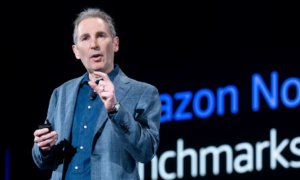Mark Zuckerberg announced that Meta will spend hundreds of billions of dollars building enormous AI data centers in the United States. The facilities will be so large that one covers nearly the same area as Manhattan.
Here’s What Meta Is Building
Meta will construct two major AI data centers as part of this investment. The first facility, called Prometheus, will be built in New Albany, Ohio, and will start operations in 2026.
The second center, named Hyperion, will be located in Louisiana. This facility could eventually use up to five gigawatts of electricity by 2030. That amount of power could run several large cities.
“We’re building multiple more titan clusters as well. Just one of these covers a significant part of the footprint of Manhattan,” Zuckerberg wrote on Threads. Manhattan covers 59.1 square kilometers, or about 22.8 square miles.
He said Meta would “invest hundreds of billions of dollars… to build superintelligence” and that the centers had been given “names befitting their scale and impact.”
Meta wants to use these centers to develop what it calls “superintelligence.” This refers to AI systems that could potentially think better than the smartest humans. The company made over $160 billion in revenue last year, mostly from online advertising.
Why This Investment Matters
Meta’s decision to build its own massive data centers shows how seriously the company takes AI competition. Instead of renting computing power from other companies, Meta wants to own and control its AI infrastructure.
This approach is like the difference between renting an apartment and buying an entire building. Meta believes that owning these facilities will give the company better control over its AI development.
The timing is important because AI models are becoming much more complex and need more computing power. Companies with the biggest and most powerful data centers will likely have advantages in developing better AI systems.
This could create a situation where only very wealthy companies can afford to compete in AI development. Smaller companies might struggle to keep up without access to similar resources.
What Industry Experts Are Saying
Karl Freund, principal analyst at Cambrian AI Research, told the BBC, “clearly, Zuckerberg intends to spend his way to the top of the AI heap.”
“The talent he is hiring will have access to some of the best AI Hardware in the world,” Freund added.
Meta’s stock price rose 1% after the announcement, according to Reuters. The company’s shares have increased more than 20% so far this year.
GazeOn’s Take
Meta’s massive bet reveals just how seriously Silicon Valley takes the AI race. While competitors focus on software breakthroughs, Zuckerberg is building the digital equivalent of naval shipyards – massive, expensive, but potentially game-changing infrastructure.
The real question isn’t whether Meta can afford this investment, but whether it can execute at this scale without stumbling over regulatory hurdles or energy constraints.
The Environmental Impact
AI data centers use enormous amounts of energy and water. One study estimates that these centers could use 1.7 trillion gallons of water globally by 2027.
To understand how much water that is, consider this: every time someone asks ChatGPT a question, it uses about as much water as a small bottle you might buy at a store. Now imagine billions of these questions being asked every day across these massive facilities.
There are currently at least 10,000 data centers around the world, with most located in the United States, followed by the United Kingdom and Germany.



























